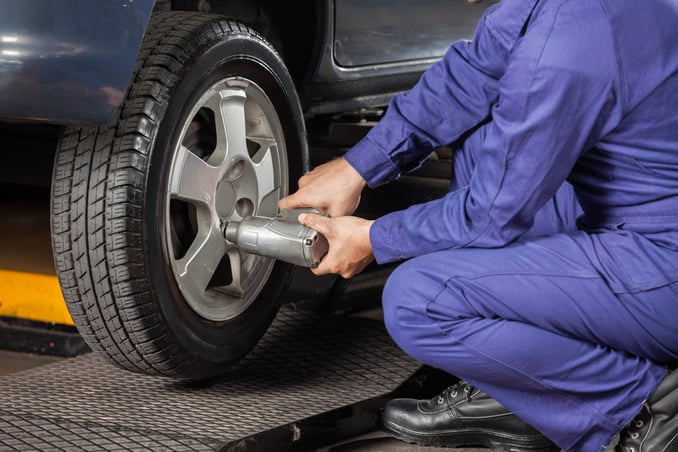Drive with Confidence: GMC Tires Service at Morris Tires
Drive with Confidence: GMC Tires Service at Morris Tires
Blog Article
Tire Solution: The Impact of Climate Conditions
When it involves guaranteeing optimum efficiency and security when driving, recognizing the influence of climate condition on tire service is essential. From scorching heat to icy roadways, each weather component can considerably influence tire capability and total driving experience. By diving into the impacts of differing weather conditions on tires, motorists can acquire beneficial understandings that might improve their vehicle's efficiency and long life. In this conversation, we will certainly check out the elaborate connection between climate conditions and tire service, clarifying the value of weather-specific tire upkeep methods and considerations.
Warmth and Tire Performance
When subjected to high temperature levels, tires experience modifications in performance that can substantially affect automobile safety and handling. The warmth produced from long term driving or heat conditions creates the tire rubber to soften, resulting in decreased step life and enhanced wear. As the rubber becomes softer, the tire's grip on the roadway diminishes, impacting braking distances and overall traction. In extreme instances, extreme warm can also create tire blowouts, posturing an extreme safety threat to the car and its passengers.

Cold Weather Condition Impacts
Winter problems can have a significant influence on tire performance and security. As temperatures decrease, tire rubber can set, causing decreased traction on icy or snow-covered roadways. In chilly weather, tires may likewise shed air stress much more quickly, which can impact handling and fuel performance. Additionally, cool temperatures can create tire sidewalls to stiffen, boosting the threat of damage from pits or other roadway threats.
To mitigate the impacts of winter on tires, it is critical to regularly check tire pressure and inflate them to the maker's suggested levels. Using wintertime or all-season tires made for chilly climate problems can additionally enhance traction and grasp on icy or snowy roads. Proper tire maintenance, consisting of regular assessments for wear and damage, ends up being much more critical during chillier months to make sure optimal performance and safety and security.
Rainy Issues Effect
Throughout rainy conditions, tire efficiency and safety and security can be significantly affected by the wet road surface areas and lowered visibility. The tread pattern of tires plays an important function in keeping traction on damp roadways. Tires with damaged treads are more prone to hydroplaning, where a layer of water develops in between the road and the tire surface, leading to loss of grip. To battle this, vehicle drivers must routinely check their tires for sufficient tread deepness and consider investing in tires particularly created for wet problems.
In addition, rainy weather can likewise lower exposure, making it challenging for motorists to see the roadway ahead plainly (GMC Tire Service). In such problems, it is necessary to adjust driving speeds as necessary and preserve a risk-free following distance to enable unexpected quits. Properly inflated tires can additionally aid in keeping control on damp roads by offering better handling and hold
Snow and Tire Security
Snow-covered roads position special challenges for vehicle drivers, highlighting the relevance of proper tire selection and maintenance. When driving in snowy problems, having the right tires can make a substantial difference in security and performance. Winter season tires are designed with unique rubber substances and step patterns to give much better grip on snow and ice contrasted to all-season tires. The much deeper footsteps and sipes of winter tires aid grip the roadway better, decreasing the risk of sliding and moving.

Additionally, motorists need to consider setting up tire chains in severe snowy problems. Tire chains give added traction by gripping the snow and ice, boosting stability and control. It is essential to comply with maker guidelines when installing and using tire chains to stop damage to the tires and car (GMC view publisher site Tire Service). By selecting the appropriate tires, keeping appropriate rising cost of living, and thinking about added traction aids like tire chains, motorists can improve their safety when browsing snow-covered roads.
Weather-Related Tire Upkeep
When confronted with numerous weather, appropriate tire maintenance becomes a critical element of lorry security and performance. Weather-related tire upkeep includes a range of practices aimed at making sure optimum tire function and long life in various climate situations. One crucial aspect of weather-related tire upkeep is tire pressure law. Fluctuating temperature levels can cause tire pressure to differ, influencing traction and fuel efficiency. Consistently readjusting and inspecting tire pressure according to manufacturer recommendations is necessary for risk-free driving in changing climate condition. In addition, tire step depth plays a significant duty in managing different weather condition elements. Tires with adequate walk deepness offer far better hold on wet or icy roadways, lowering the risk of skidding or hydroplaning. When tread wear reaches a particular deepness is important for keeping grip and stability in unfavorable weather condition, examining tire tread routinely and changing tires. By focusing on weather-related tire upkeep, motorists can improve security, boost lorry efficiency, and lengthen the lifespan of their tires.
Verdict
In conclusion, weather have a substantial effect on tire performance and security. From heat influencing tire stress and put on to winter reducing grip, it is important to think about the weather condition when maintaining and making use of tires. Stormy problems can reduce grip and cause hydroplaning, while snow can increase the threat of accidents if tires are not effectively outfitted. Weather-related tire upkeep is important in making sure optimum efficiency and safety and security when traveling.
In this discussion, we will certainly explore the intricate connection in between weather problems and tire solution, dropping light on the significance of weather-specific tire maintenance you could try here techniques and considerations.

Report this page